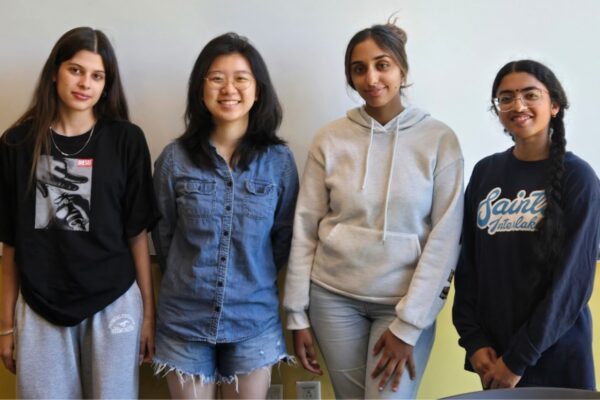Researching to Protect Birds by Joonjoo Lee

If I could direct your attention to a window in a building across a street on a sunny day, you might see a vivid image of a tree reflected in/on the glass. Look familiar? That same clear image can also be a complete reflection of a forest wherein a bird could mistake it for a passageway and BAM! – hits the window and plunges to the concrete.
During the summer quarter of 2025, I was fortunate to be able to participate in a group bird window collision project, lead by Dr. Ursula Valdez and Dr. Jeffrey Jensen, focusing on determining the frequency of bird collisions at UW Bothell campus as well as the efficacy of preventative films on windows. If we could distort the reflection of forestry enough using films of lines or dots, birds would be able to tell the difference between a pathway and a window. If this project went well, then I would have helped make a difference on campus and if this project continued throughout the year, it could be a good start for beginner undergrad student researchers to explore avian ecology research.
To be honest, we didn’t make much progress at all. We’ve only really just started with data collection using an observational survey. With that, here are some of the things I have learned:
Number one: data collection is the hardest part of the research process. Our observational survey has us searching for fallen birds as often as we can every week. That way we can get the most consistent data to determine frequency of bird collisions. Even though it is the hardest because of the consistency and long term requirements, it is the foundation for any research, and the most rewarding. It was sad to see a fallen Anna’s Hummingbird (found by one of my group members on a morning walk) but necessary for our project. Not only does it teach you about the technical details and accountability, it helped me with organizing data.
Number two: Starting is everything. The great thing about undergrad research is that nobody expects anything from you other than your full effort. It’s okay if you are a complete newbie at whatever field you are in. That’s why it is so amazing to be able to work with others who are at various stages of their academic years; the Summer Research Awards Program is a prime example and resource to learn from. I learned a lot about how other people went about with their research and the struggles they went through which were similar to mine.
Number three: Communication is key. One of the obstacles I faced was communication. Both of our mentors were out of town at first, so it was harder to communicate with them on a timely basis. I ended up becoming sort of the main communicator between our mentors and our group members using email. This was an attempt on my part to streamline the communication process so that it was easier for all of us to have our information in one place. While it may have been more or less efficient, I realized that it took away chances for my other group members to connect with the mentors better. I did, however, become better with organizing information in emails. With that in mind, a piece of advice I would give to those starting with a group is to get to know what your roles are, if you will go down that route.
I feel like it is too soon for me to decide if this research path is the right one for me. But what I do know is that so far this research opportunity has opened a lot of doors for me and taught me a lot about how I work with others and that I enjoy anything bird related.
All in all, a research project is what you put into it. The amount of effort you put into the project will come back to you. Everyone’s research experience is different, so don’t give up.

Photo: Anna’s hummingbird found behind UW1 on campus.
Learn more about the Research & Creative Projects for Undergrads at UW Bothell.